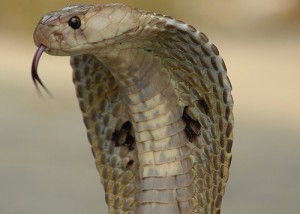Well, is it? We don’t know. This article from Outside raises and presumably answers the question. We don’t know because we haven’t read it. We don’t need to. Here’s why: Let’s say you’re on a long hike…no, call it a trek, alone, in a wilderness. A wasteland. And you’re lost. Your food is running out. You see a snake, so you kill it. And because you’re starving, you eat it, greedily. You’re starving. Even if you read this story and it said, Don’t eat the snakes, you would. Because you are starving.
If you’re hiking and lost and not starving…which is very possible, because you’ll probably die of dehydration before you starve…then eating the snake would be more or less elective. And here’s where we would probably take a pass. We’d need to be very, very hungry to eat a free-range snake. Pretty sure. But we are nevertheless passing the story along to you, mostly because we want to publish this headline. Just once. And it provides a rare opportunity to steer you to our favorite snake expert for additional information.
Update: We went back and read it because, if our first concern is dehydration, maybe we would indulge in a little snake blood. Something to get us over the next ridge. Unfortunately, the article is silent on the potability of the vital liquid coursing through a snake’s cold veins. But as a food? It’s OK.
“Once skinned and cleaned, the meat can be boiled up in a stew with any other tasty tidbits or edible plants or placed on sticks and cooked shish-kebab style over the coals.”
Still.
Photo by Kamalnv, via Wikimedia Commons










